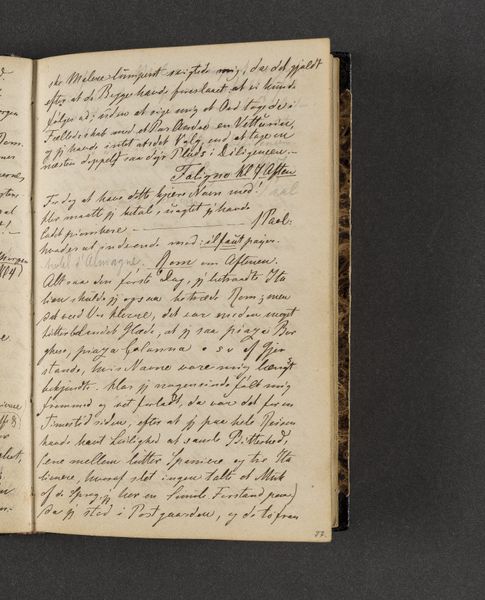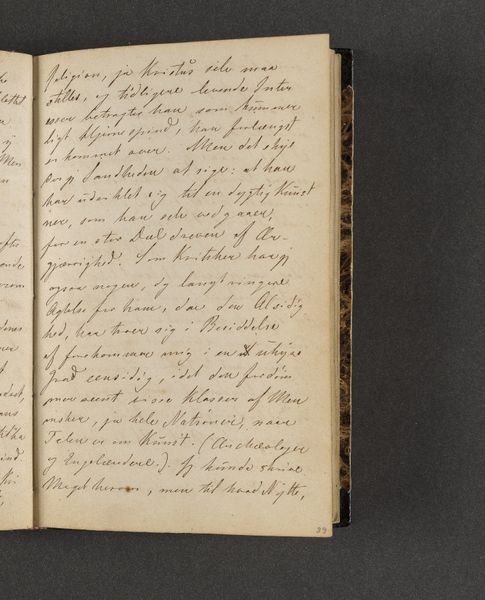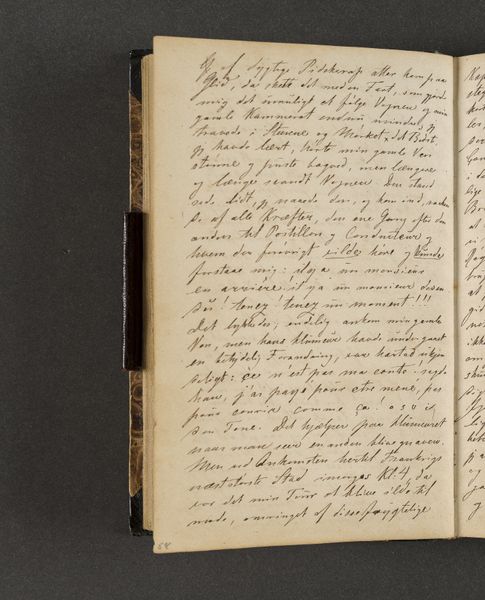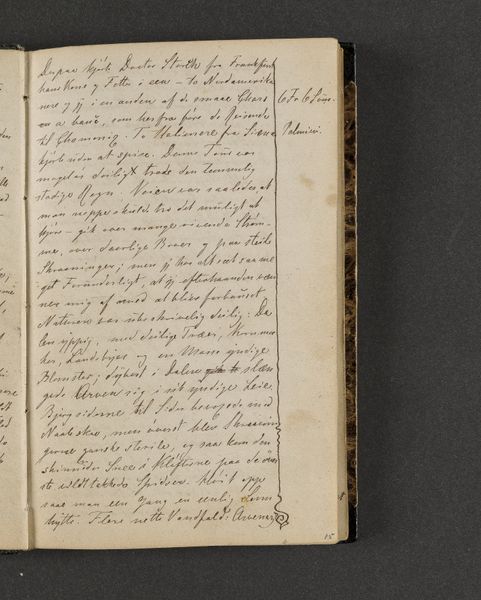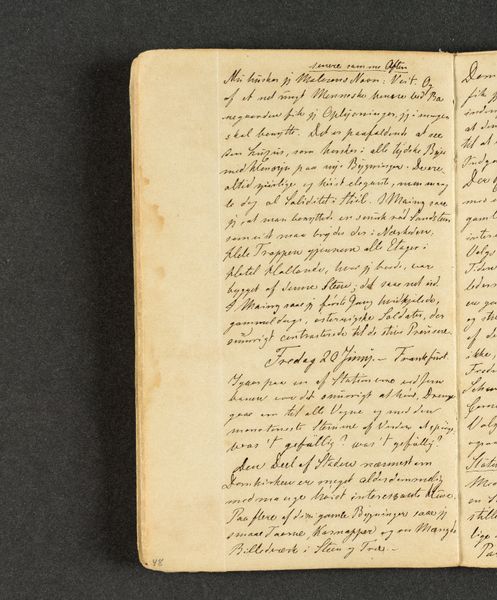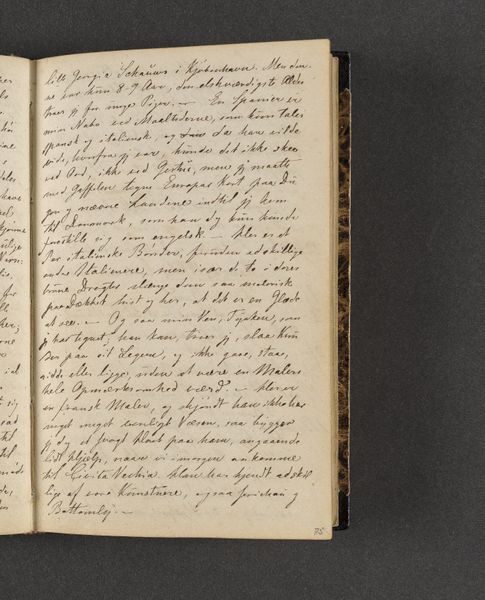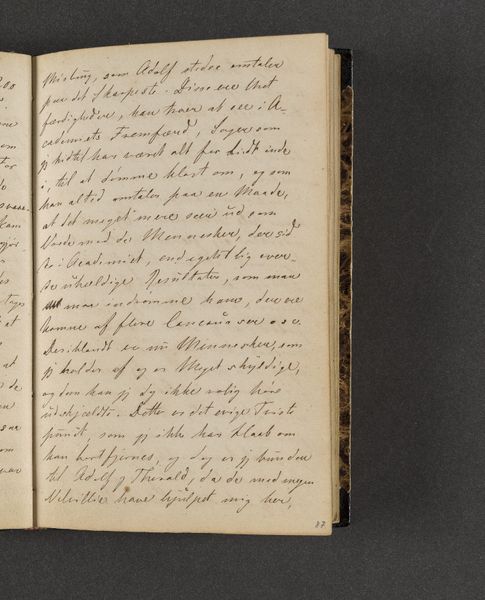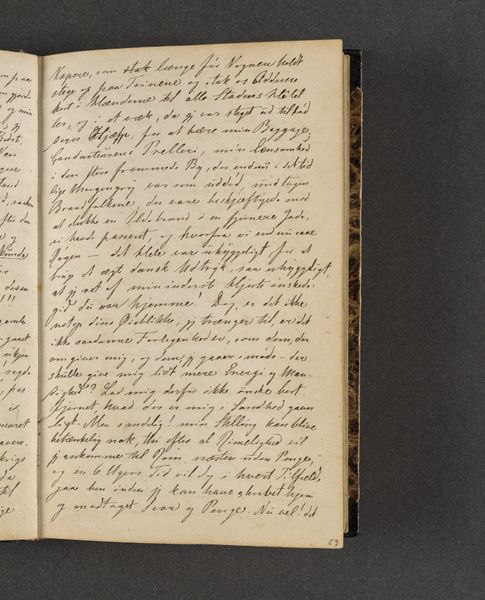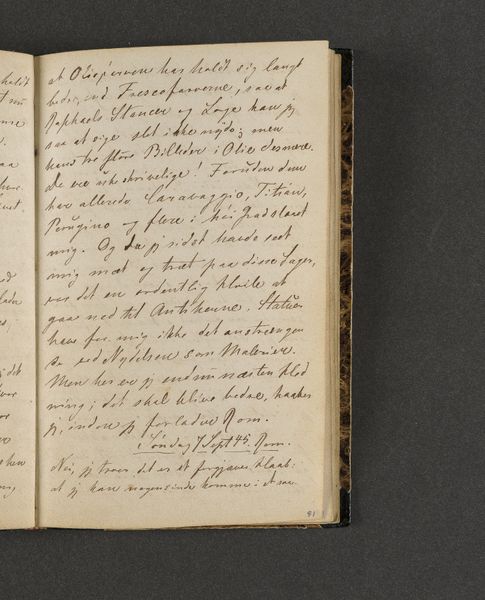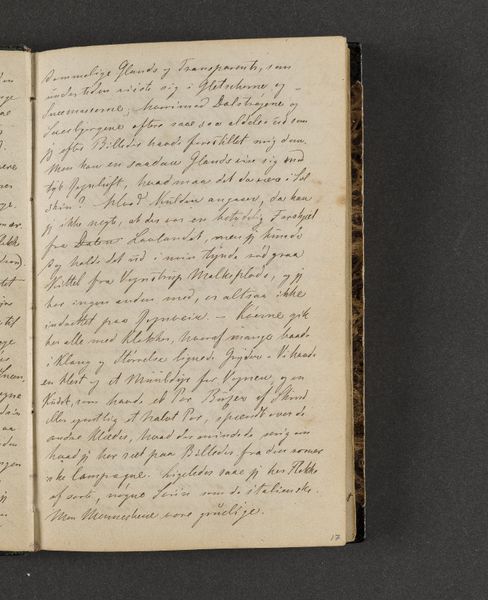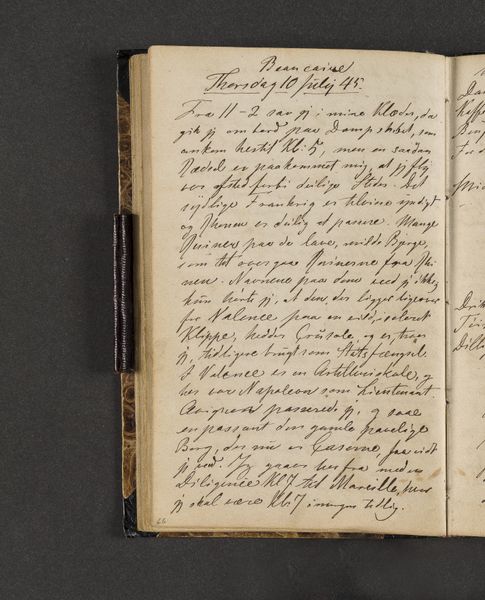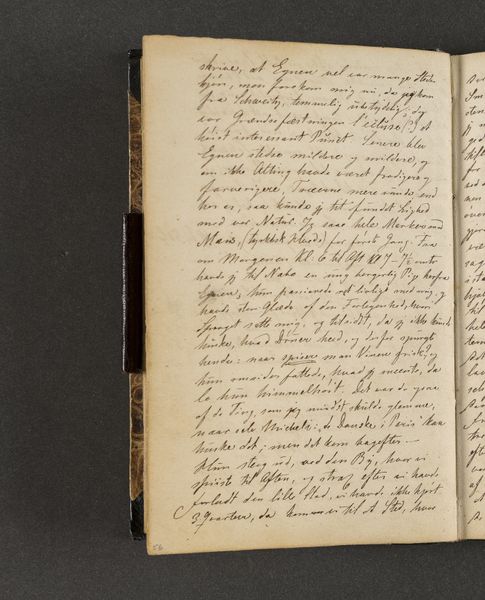
drawing, mixed-media, paper, pen
#
drawing
#
mixed-media
#
paper
#
romanticism
#
pen
Dimensions: 161 mm (height) x 103 mm (width) x 11 mm (depth) (monteringsmaal)
Curator: What strikes me immediately about this piece is the density of the script. It's like looking at a woven textile of language. Editor: Indeed. We're looking at "La Batia-borgen ved Martigny" crafted by Johan Thomas Lundbye in 1845. Housed at the SMK, Statens Museum for Kunst, it’s a mixed-media work, primarily pen and drawing on paper. Curator: Given your background in socio-political history, what story does this artwork whisper about its era? It's quite literally text-based and might give insight to social commentary, or even a personal statement against political and societal issues through careful coded imagery? Editor: I think you’re onto something. Lundbye, aligning with Romanticism, used his art to express nationalist sentiment. These types of writings could very well embed cultural values through folk legends, aiming at constructing a national identity. We're seeing Denmark, in particular, defining itself amidst political upheaval. Curator: It really comes to life for me considering symbols can be more powerful than broad statement! Perhaps through the text itself and certain flourishes he embeds coded visual messages... What symbols keep recurring or how letters morph in some of the more illustrative calligraphic lines? Editor: And considering who consumes it too! It would primarily be for a literary, often aristocratic group who has had classical training. Certain phrases, words, or forms may resonate with that elite that would completely pass over a typical farmer or worker. The audience truly dictates its overall "symbol." Curator: That's very astute. By recognizing both the power of symbols and then factoring in that the audience's interpretation may be just as vital, we are creating a dialogue. How society views their art shows just as much as the actual artistic decision by Lundbye here. Editor: It has a deeply private feeling. It isn't meant for display or as a heroic painting. Curator: So many narratives packed within a single page, then! Its intimacy perhaps adds to its appeal even more, as though we have had to hunt in the archive to reveal these pages from history... Editor: Well, uncovering works like these reminds us how deeply intertwined art, identity, and political messaging can be, especially during transformative periods. Curator: A very important message indeed, how these pages serve as crucial archives of sentiment and cultural shifts. Thanks for revealing your expert historical view with us today!
Comments
No comments
Be the first to comment and join the conversation on the ultimate creative platform.
